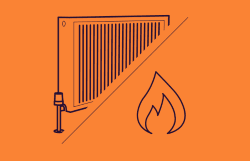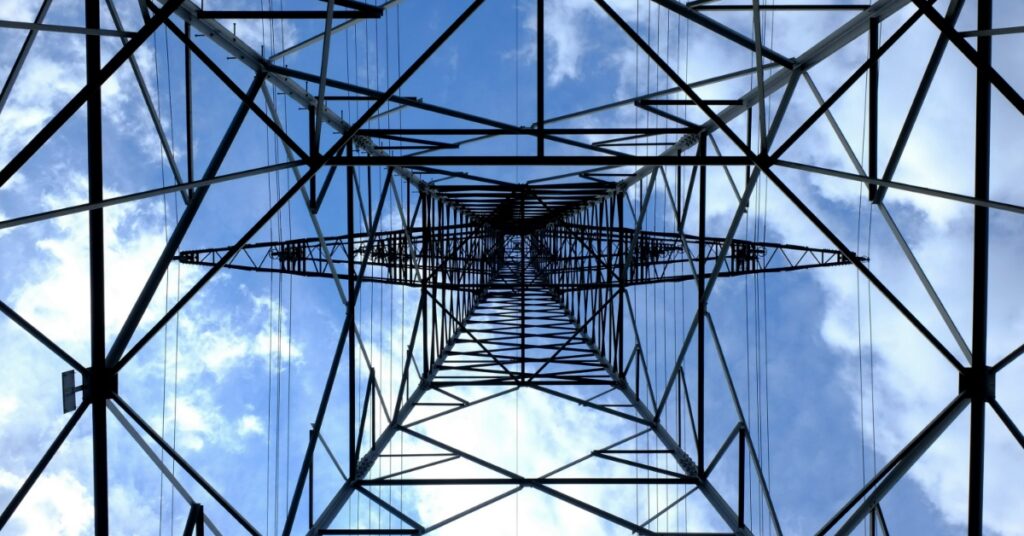As the UK continues to transition towards a low-carbon net zero energy system, grid system stability has become an increasingly important issue. With more variable renewable energy sources being added to the grid, it is essential that the grid remains stable and reliable. Grid stability refers to the ability of the electricity system operator and electricity grid to maintain a constant frequency and voltage, despite fluctuations in supply and demand. Any significant deviations in frequency or voltage can cause power outages and damage to electrical equipment at power stations. In recent years, the UK has implemented various measures to improve grid stability, including the use of rotating stabilisers and advanced control systems.
However, as the grid becomes more complex, new solutions will be needed to ensure grid stability is maintained. This article will explore some of the challenges facing grid stability in the UK and examine some of the innovative solutions being developed to address them. From smart grids to energy storage, there are a range of technologies and strategies that can help to ensure the UK’s grid remains stable and reliable as the country transitions to a low-carbon energy system.
Understanding grid stability
Grid stability is the ability of the electricity grid to maintain a constant balance between the supply of electricity and the demand for it. Maintaining this balance is crucial for ensuring a reliable and secure supply of electricity to consumers.
In the UK, the National Grid is responsible for managing the electricity system and ensuring grid stability. To do this, they use a range of measures, including forecasting demand, managing supply, and controlling the frequency of the grid.
One of the biggest challenges to grid stability is the increasing use of intermittent renewable energy sources such as wind and solar. These sources of energy are dependent on weather conditions and can fluctuate rapidly, making it difficult to maintain a stable supply of electricity.
To address this challenge, the National Grid is implementing a range of measures, including energy storage, demand-side response, and interconnectors. Energy storage technologies, such as batteries and pumped hydro, can help to store excess energy during times of low demand and release it when demand is high. Demand-side response involves incentivizing consumers to shift their electricity usage to times when supply is abundant. Interconnectors allow the UK to import or export electricity to other countries, helping to balance the grid and ensure grid stability.
Another important aspect of grid stability is the frequency of the grid. In the UK, the standard frequency is 50Hz, and any deviation from this can cause problems for the grid. To maintain frequency, the National Grid uses a range of tools, including frequency response services, which are provided by generators and other sources of electricity.
In summary, grid stability is crucial for ensuring a reliable and secure supply of electricity to consumers. The National Grid uses a range of measures to maintain grid stability, including energy storage, demand-side response, and interconnectors. Maintaining a constant frequency is also important, and the National Grid uses a range of tools to manage this.
Why don’t we get to use all of our renewable energy production
Although the UK has made significant progress in increasing the amount of renewable energy in its electricity mix, not all of the available renewable energy production is utilized. The UK struggles to make the most of its incredible amount of zero carbon renewable generation. There are several reasons for this.
One reason is that the electricity grid was not designed to handle large amounts of intermittent renewable energy sources, such as wind and solar. The grid was built to accommodate stable and predictable sources of energy, such as fossil fuel power plants. As a result, there are limitations on how much renewable energy can be added to the grid without causing instability or disruptions.
Another reason is that the location of renewable energy sources does not always align with the demand for electricity. For example, many wind farms are located in remote areas with limited transmission infrastructure, making it difficult to transport the electricity to where it is needed. Zero-carbon fuel sources and renewable power and not without serious energy supply problems. In fact, one big problem with the current energy transition is to create a green system with enough inertia is an engineering challenge for system operators worldwide.
In addition, the intermittency of renewable energy sources means that there may be times when there is too much electricity being generated, which can lead to curtailment. Curtailment occurs when renewable energy sources are forced to shut down or reduce their output because there is not enough demand for the electricity they are generating. This can result in wasted energy and lost revenue for renewable energy providers.
To address these issues, there are ongoing efforts to upgrade and modernize the electricity grid, including the installation of smart grids and the development of energy storage technologies. Energy storage technologies, such as batteries and pumped hydro, can help to store excess renewable energy production during times of low demand and release it when demand is high, helping to balance the grid.
In addition, there are plans to expand the transmission infrastructure, allowing renewable energy to be transported more efficiently from remote areas to where it is needed. Furthermore, there is a growing focus on demand-side management, which involves incentivizing consumers to shift their electricity usage to times when renewable energy production is high.
In summary, there are several reasons why not all of the available renewable energy production is utilized in the UK, including limitations of the electricity grid, location of renewable energy sources, and intermittency of renewable energy. However, there are ongoing efforts to address these issues and increase the utilization of renewable energy production, including upgrading the electricity grid, developing energy storage technologies, expanding transmission infrastructure, and promoting demand-side management.
Rotating stabilisers
Rotating stabilisers, also known as synchronous condensers, is a type of technology used to improve grid stability. They are essentially large rotating machines that are connected to the electricity grid and help to provide inertia and reactive power support.
Inertia is the property of rotating machines that causes them to resist changes in speed. In the context of the electricity grid, inertia is important because it helps to maintain the stability of the grid by providing a buffer against sudden changes in supply or demand. When there is a sudden increase in demand for electricity, the rotating machines on the grid provide inertia, which helps to stabilize the frequency of the grid.
Reactive power support is also important for grid stability. Reactive power is a type of power that is required to maintain the voltage levels on the grid. When there is a sudden increase in demand for electricity, the voltage levels on the grid can drop, which can cause problems for the grid. Reactive power support helps to maintain the voltage levels on the grid and prevent these problems.
Rotating stabilisers are particularly useful for improving grid stability in areas where there is a high penetration of renewable energy sources. As mentioned earlier, renewable energy sources can be intermittent and fluctuate rapidly, which can make it difficult to maintain grid stability. Rotating stabilisers provide the necessary inertia and reactive power support to help stabilize the grid and prevent disruptions.
In the UK, there are several projects underway to install rotating stabilisers on the electricity grid. For example, Scottish Power is planning to install a synchronous condenser at its Whitelee wind farm, which is the UK’s largest onshore wind farm. This project will help to provide stability to the grid in the area and support the integration of more renewable energy.
In summary, rotating stabilisers are a type of technology used to improve grid stability by providing inertia and reactive power support. They are particularly useful for stabilizing the grid in areas with a high penetration of renewable energy sources. There are several projects underway in the UK to install rotating stabilisers on the electricity grid to improve grid stability and support the integration of more renewable energy.
Long-term green solutions for the grid
As the UK continues to transition towards a low-carbon energy system, there is a growing need for long-term green solutions for the electricity grid. Here are some potential solutions that could help to decarbonize the grid over the long term:
-
Offshore wind: Offshore wind is one of the most promising sources of renewable energy in the UK. The country has some of the best wind resources in Europe, and offshore wind farms have the potential to generate large amounts of electricity. By 2030, the UK aims to have 40GW of offshore wind capacity, which would be enough to power all UK homes.
-
Solar power: Solar power is another promising source of renewable energy. The UK has a growing number of solar farms, and the cost of solar panels has been declining rapidly in recent years. As the cost of solar power continues to fall, it is likely that more solar farms will be built in the UK.
-
Energy storage: Energy storage technologies, such as batteries and pumped hydro, can help to store excess renewable energy production and release it when demand is high. As the cost of energy storage technologies continues to fall, it is likely that more energy storage will be deployed on the grid.
-
Smart grids: Smart grids are electricity grids that use digital technologies to improve the efficiency and reliability of the grid. Smart grids can help to integrate more renewable energy onto the grid and manage demand more effectively.
-
Electric vehicles: The growth of electric vehicles (EVs) presents an opportunity to decarbonize the transport sector and provide additional flexibility to the grid. EVs can be used as mobile batteries, helping to store excess renewable energy production and releasing it when demand is high.
-
Green hydrogen: Green hydrogen is produced by electrolysis of water using renewable electricity. It can be used as a fuel for vehicles or as a feedstock for industrial processes. As the cost of renewable electricity continues to fall, it is likely that green hydrogen will become more cost-competitive with other forms of hydrogen.
In conclusion, there are several long-term green solutions for the electricity grid in the UK, including offshore wind, solar power, energy storage, smart grids, electric vehicles, and green hydrogen. These solutions can help to decarbonize the grid over the long term and support the transition towards a low-carbon energy system.




